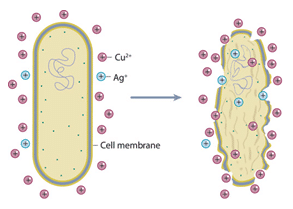Legionella Control FAQ
Frequently Asked Questions on Legionella Control and Water Treatment
What is Legionella Bacteria? Is it dangerous?
Legionella bacteria naturally occur and live in groundwater and soil. They can survive municipal water treatments and thrive in the warm, damp conditions of plumbing systems commonly seen in large buildings and facilities.
Breathing or inhaling mist and water vapor infected with Legionella bacteria can cause Legionnaires’ disease. This waterborne pathogen accounts for thousands of hospital admissions and a growing number of fatalities annually. You can learn more about this topic in our blog post, How Legionnaires’ Disease is Spread.
What level of Legionella in water is dangerous?
The Occupational Safety & Health Administration (OSHA) website states that most legionella issues in a potable water system have a typical Legionella concentration average of 160 CFU/mL (range <1 to 1,500).
There are many types of Legionella bacteria, referred to as “serogroups.” Serogroup 1 is the most dangerous and will cause Legionnaires’ disease, a type of pneumonia. The disease may be mild in young or healthy people, but for smokers, the elderly, or immunocompromised people, the disease can be deadly. Legionnaires’ disease can be fatal unless the patient is tested and treated promptly. Other serogroups and blue-white Legionella are less dangerous. They are more likely to cause Pontiac fever, which is milder than Legionnaires’ disease and presents as an influenza illness. It is essential to control the level of Legionella in your building or facility’s water system to keep the users safe and healthy.
How do you treat or control Legionella in water?
Legionella is a pervasive, naturally occurring bacteria. The best Legionella water treatment is a long-term solution that will control the bacteria over time. The safer, simpler, and more effective method providing continual protection throughout the water system is what EPI uses – Copper-Silver Ionization.
Legionella bacteria are negatively charged. Copper-Silver Ionization generates positively charged copper-silver ions that are attracted to Legionella bacteria. The copper-silver ions can penetrate the bacteria and cause cell lysis and bacteria death.

Image Credit: Sarjomaa et.al., 2011, Prevention of Legionnaires’ Disease in Hospitals, Tidsskr Nor Legeforen nr. 16, 131: 1554-7.
Can I kill Legionella with chlorine?
The short answer is yes. Chlorine dioxide is a major disinfectant used to control Legionella.
However, there are risks to using chlorine:
Chemicals make rubber fittings commonly found in flush valves, faucets, and some pipe connections brittle over time.
Halogen-based chemicals like chlorine are volatile, often requiring daily testing and monitoring to control the dosage in water systems.
High temperatures affect chemical levels when circulating in hot water loops, which create treatment inconsistencies.
Some people are more sensitive to chemicals and changes in their environment.
Can boiling water kill Legionella?
Hot water can kill bacteria if it is heated to 160℉, but it must remain at that temperature for a sustained period. Once the water goes back to a safe-to-handle temperature, Legionella bacteria have an opportunity to start growing again.
What disinfectant kills legionella?
There are several ways you can control Legionella in water, from installing filters to using halogen-based chemicals.
The method EPI specializes in, Copper-Silver Ionization is one of the safest and most effective methods to treat and control Legionella in water. It is recognized by the World Health Organization (WHO) and the United States Environmental Protection Agency (EPA) for controlling Legionella in large-scale facilities for both long and short-term remediation. You can learn more about this topic in our blog post, “What Are My Options for Legionella Remediation?”
What is the routine Legionella testing process?
After a water sample is obtained, it usually gets sent to a lab for testing. The results will take a few days. Centers for Disease Control and Prevention (CDC) provides a guide for Routine Testing for Legionella on their website.
EPI understands how important it is for facility managers to maintain Legionella level with timely data, which prompted the innovation of Copper-Silver Monitor (CSM), an EPI-exclusive water treatment technology. Instead of waiting days for water testing results, CSM provides automated daily copper-silver monitoring that allows real-time adjustments to maintain full Legionella control. Daily reporting from CSM also reduces the number of manual site testing and lab sample testing. You can learn more about the benefits of an EPI’s water treatment system and our innovative technology on our EPI System page.
Ready to Improve Your Facilities’ Water Quality?
Contact the experts at EPI for a free site assessment!